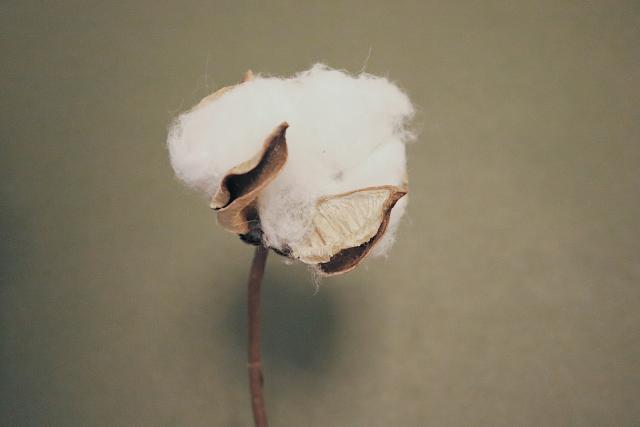Clothed in Conservation: Fashion & Water

The fashion industry is the second most water-intensive industry in the world [1], consuming around 79 billion cubic metres of water per year [2]. That statistic is startling considering 2.7 billion people currently experience water scarcity [3]. This all means that a massive amount of water is used to feed the fast fashion industry, all while billions of people lack an adequate supply of water to drink. To put that in perspective, it takes 2,700 liters of water to make the average cotton t-shirt and that’s enough drinking water for one person for 900 days [4].
How can that much water possibly be used for clothes? Let’s look at the process.
Most clothing is made from cotton. It is used in 60% of all U.S produced retail apparel and home furnishings [5], so we need to produce a lot of it! Cotton requires the most water out of any other crop and needs a staggering 7,000-29,000 liters of water to produce just one kilogram of raw cotton [6]. The added irrigation for cotton crops adds stress on local water supply and depletes aquifer and groundwater supplies that take thousands of years to naturally replenish. After being harvested, the raw cotton then needs to be spun, dyed, and finished into apparel. The processing for conventional textiles requires around 100-150 liters of water for every kilogram of fiber [7]. Not only does the processing of textiles consume an immense amount of water, it also heavily pollutes the water it uses which causes environmental damage, unhealthy conditions for workers, and major health risks for those who live near processing plants. About 8,000 synthetic chemicals are used to turn raw materials into textiles and around 20% of industrial water pollution globally comes from the treatment and dyeing of textiles [8]. These chemicals contaminate the billions of liters of water used to process textiles and then are discharged into waterways. Most of these processing plants are located in China and India [4], areas that experience high population density and poverty rates, and damages communities that are already vulnerable.
TAKE ACTION: How You Can Help!
-
Buy second-hand clothing! → check out local thrift, consignment and resale stores
-
Prolong the life of your clothing → wash less or wash by hand, air dry, remove stains immediately, mend if torn
-
Instead of throwing away no longer needed clothes, donate them to local charity or sell them to a consignment or resale store
-
Buy good quality clothing that will last and won’t go out of style quickly
-
Don’t support fast fashion brands
-
Buy from brands that use sustainably produced cotton → look for certifications like 100% organic, GOTS Certified Organic, recycled, Fairtrade, or Better Cotton Initiative
Clothing is essential and we can’t escape the need for clothes. But this destructive process isn’t the only way we can get our apparel! There are hundreds of companies working to make their clothing more sustainable. Yes, these companies do have higher prices than their fast fashion competitors, but their garments are higher quality and will last you much longer! Supporting companies with sustainability initiatives promotes sustainable practices within fashion, provides healthy conditions for textile workers, and lowers your individual environmental footprint. Another good alternative is to purchase clothing made from 100% organic cotton. Organic cotton uses no toxic chemicals, cultivates good soil instead of damaging it, has less impact on the air, uses 88% less water and 62% less energy than conventional cotton [9]. The easiest and least expensive sustainable fashion option is to buy second-hand! Local thrift, consignment and resale are great places to find second-hand clothes. So much clothing has already been made and has lots of use left, and the most sustainable option for anything is to use what you already have first!
Prolonging the life of the clothes you already have is another great option and will decrease how much clothing you will have to buy. Ways to prolong the life of your clothes are: immediately removing stains after you get them (wetting the stained area and rubbing baking soda in it does wonders), wash your clothes less or gently wash them by hand (if you didn’t sweat in them then you should be fine), air dry instead of using a dryer, and mend any tears instead of throwing out the item altogether. Finally, buying good quality clothing instead of cheap fast fashion apparel will also greatly extend how long you keep an item. High quality clothes will initially cost more money but can be worn more times, so in the long run they are actually less expensive! If you do find yourself no longer fitting into or needing some of your clothes, consider donating them to local charity or selling them to a consignment or resale store. There are many ways YOU can cultivate and promote sustainable fashion on an individual level. Take action and spread the knowledge to others! Together we can make a tremendous difference.
Pro Tips:
-
Plato’s Closet is a great resale chain available across the country and you can sell your old clothes to them for cash on the spot!
-
Here is a great list of ethical & sustainable brands to buy from!
-
Want to know how sustainable a brand is? Look it up in the Good On You directory
References:
-
Smarter Business. The Top 5 Industries That Consume the Most Water. https://smarterbusiness.co.uk/blogs/the-top-5-industries-that-consume-the-most-water/
-
Global Fashion Agenda and The Boston Consulting Group (2017). Pulse of the Fashion Industry Report. http://globalfashionagenda.com/wp-content/uploads/2017/05/Pulse-of-the-Fashion-Industry_2017.pdf
-
World Wildlife Fund. Water Scarcity. https://www.worldwildlife.org/threats/water-scarcity
-
National Geographic. How Your T-Shirt Can Make a Difference. https://video.nationalgeographic.com/video/00000144-0a29-d3cb-a96c-7b2dea6c0000
-
National Cotton Council of America. Cotton’s Major Uses. https://www.cotton.org/pubs/cottoncounts/fieldtofabric/uses.cfm
-
World Wildlife Fund. Thirsty Crops. http://assets.panda.org/downloads/wwfbookletthirstycrops.pdf
-
Common Objective. The Issues: Water. https://www.commonobjective.co/article/the-issues-water
-
Good On You. Fashion: The Thirsty Industry. https://goodonyou.eco/fashion-and-water-the-thirsty-industry/
-
About Organic Cotton. What You Should Know About Organic Cotton. http://aboutorganiccotton.org/

